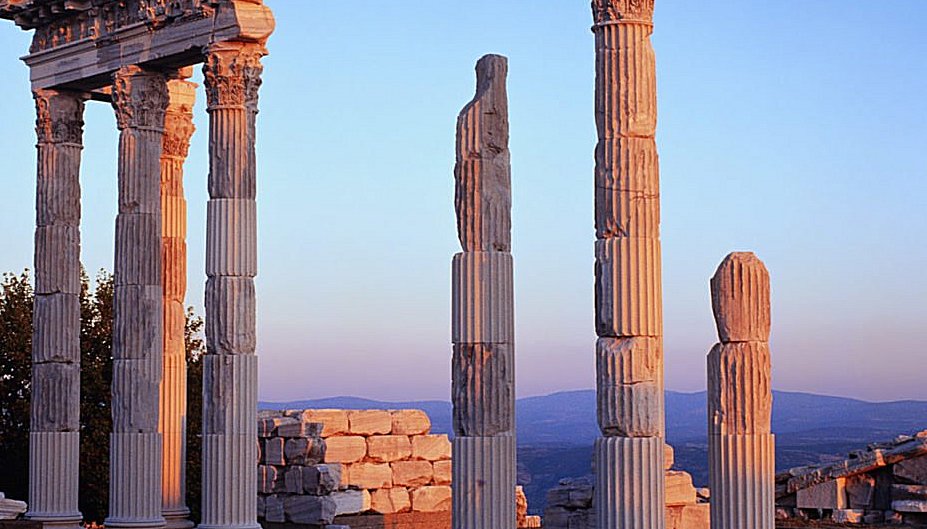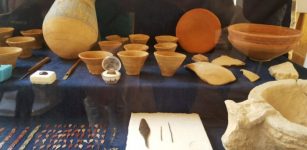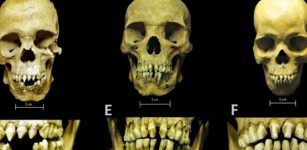Excavations Reveal New Artifacts That Change History Of Ancient City Of Pergamon
Conny Waters - AncientPages.com - Archaeological excavations conducted at the site of the ancient city of Pergamon show that the region is even older than first thought.
In the last excavations In the Lower City, archaeologists unearthed a bottle of perfume oil called "aryballos" and a dress needle known as "fibula" dating to the sixth century BC and to the seventh century BC.
 Ancient Pergamon. source
Ancient Pergamon. source
The discovery of these artifacts in the Lower City, which is prominent with findings from the Roman period, revealed that civilizations had been established in the region much earlier than is known, reports Daily Sabah.
The ancient city is included in the United Nations Educational, Scientific and Cultural Organization’s (UNESCO) World Heritage List as a Multi-Layered Cultural Landscape Area. The Upper City has a rich history of kings and commanders who lived, and the Lower City was developed with a simpler architectural style for the public, is being shaped according to these new findings.
Archaeological excavations carried out in the ancient city of Pergamon, which is located 26 kilometers (16 miles) from the present coastline of the Aegean Sea and northwest of the Bergama district in Izmir province.
It has been found that the history of the Lower City dates back to the Archaic Period, like the Upper City, the stately home of kings' palaces, arsenals, and large temples.
See also:
In an interview with Anadolu Agency (AA), Pergamon Museum Director Nilgün Ustura said that excavation, drilling, and salvage work are underway in the area. She noted, “We are having a busy season. Our work here is not monthly, but year-round. The findings unearthed during this process reveal significant contributions to the ancient city of Pergamon.”
Left: The bottle of perfume oil called "aryballos". ( AA PHOTO); As the dress needle, known as "fibula" belongs to the archaic period, it revealed that civilizations in the Lower City had been established much earlier. (AA PHOTO)
The director stated that the excavations that lasted for many years are important in terms of revealing the borders of the necropoles in the Lower City, adding that traces of an earlier settlement in the region, apart from the Hellenistic and Roman layers, have been found.
Expressing that they are trying to determine the spread area of the city with excavation works, Ustura continued:
“It became possible to unearth findings dating to an earlier period than the Hellenistic and Roman periods. We found stuff belonging to the archaic period in the Lower City. This is very important data for us in terms of the history of the city. The excavation area can be expanded in different places with new findings. The period of cultural layers of a city's history is crucial for us. We previously encountered archaic findings in the Upper City, albeit limited. It is important to find the first examples of the period in the Lower City. Our artifacts are being preserved,” said Ustura, adding that they will focus on international publications about the excavations which are carried out by an expert team in the Ertuğrul neighborhood.
The remains of the Pergamon ancient city were first discovered in the 1870s by German engineer Carl Humann.
The ancient city featured an amphitheater that could seat 50,000 people and a theater for 30,000 people, the second largest library in the ancient world as well as the first hospital. Besides, it was home to many civilizations throughout history.
“Pergamon is a testimony to the unique and integrated aesthetic achievement of the civilizations. It incorporates Hellenistic, Roman, Byzantine and Ottoman structures, reflecting Paganism, Christianity, Judaism, and Islam, preserving their cultural features within the historical landscape,” UNESCO says on its website.
Artifacts found in the ancient city are put on display at the Pergamon Museum after being recorded.
Among the artifacts exhibited in the museum are the Yortanlı vessels and beak-mouth vessels dating back to the Bronze Age, as well as local productions, coins, oil lamps, sculptures and sarcophagi samples unique to ancient Pergamon.
Written by Conny Waters - AncientPages.com Staff Writer





















